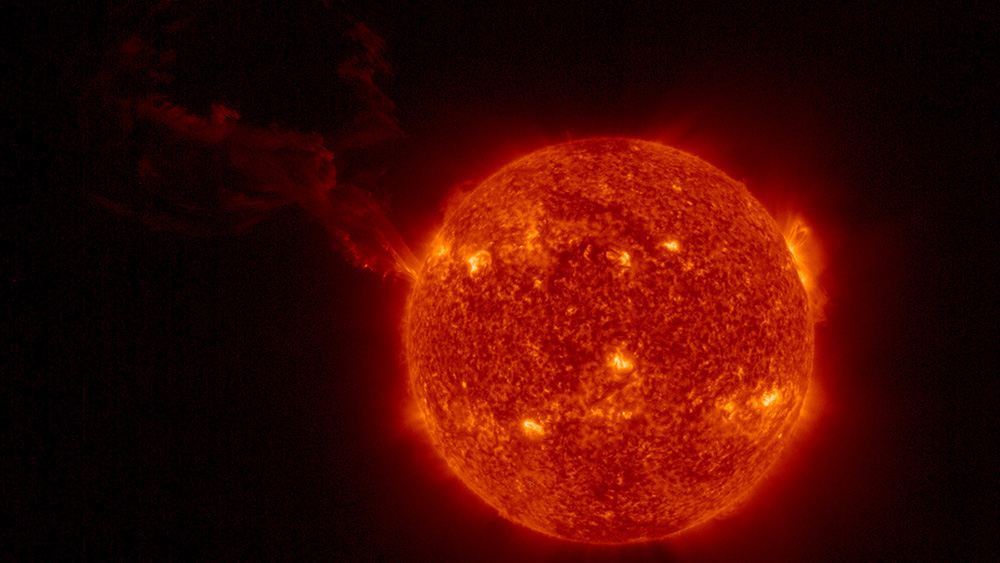The coronal mass ejection was not directed at Earth. In fact, it is travelling away from us. There is no signature of the eruption on the solar disc facing the spacecraft – which is currently approaching the Earth-Sun line – meaning that it must have originated from the side of the Sun facing away from us.
Solar prominences are large structures made of tangled magnetic field lines that keep dense concentrations of solar plasma suspended above the Sun’s surface and often take the form of arching loops.
RoCS on a mission with ESA and NASA
Solar Orbiter is the most complex scientific laboratory ever to have been sent to the Sun. It was launched a year ago from Cape Canaveral in America, on the 10th of February 2020. RoCS - Rosseland Centre for Solar Physics has been a part of the mission from the start and their scientists and engineers play key roles on one of the remote sensing instruments: SPICE (Spectral Imaging of the Coronal Environment).
Finding answers
Although our life-giving star has been an object of scientific interest for centuries, its behaviour still presents a puzzle for scientists. Solar Orbiter will take images of the Sun from closer than any spacecraft before and for the first time look at its uncharted polar regions. By combining observations from Solar Orbiter’s six remote-sensing instruments and four sets of in situ instruments, scientists hope to find answers to some profound questions:
- What drives the Sun’s 11-year cycle of rising and subsiding magnetic activity?
- What heats up the upper layer of its atmosphere, the corona, to millions of degrees Celsius?
- What drives the generation of the solar wind?
- What accelerates the solar wind to speeds of hundreds of kilometres per second?
- And how does it all affect our planet?
Read "Solar Orbiter catches a second comet by the tail" (RoCS website)
Read "Solar Orbiter delivers science results" (RoCS website)
Read more about the solar flare at ESA's (The European Space Agency) website
